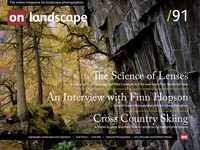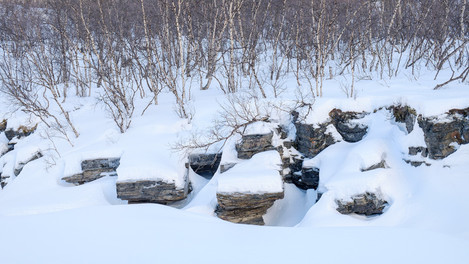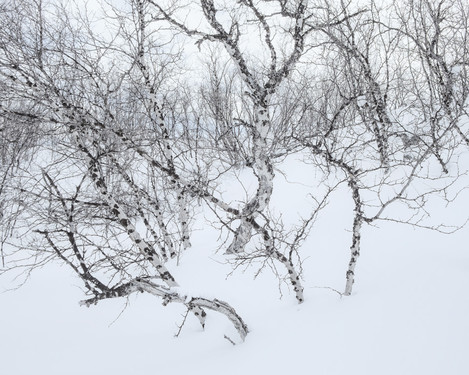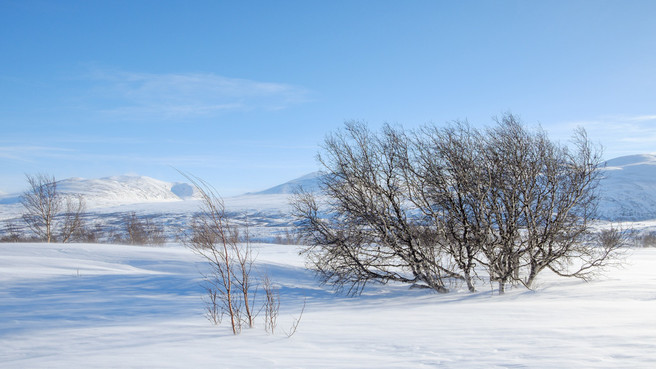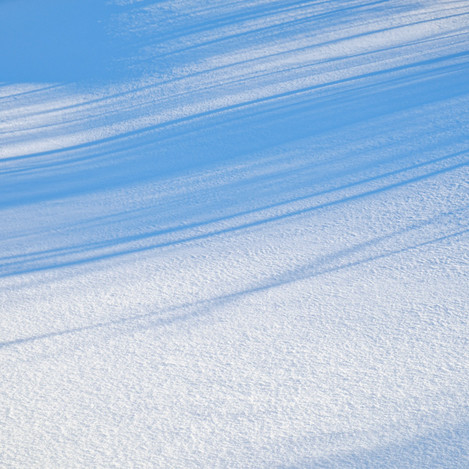A Year On

Lizzie Shepherd
Lizzie is a full time professional photographer based in North Yorkshire, specialising in landscape, nature and travel photography. She writes for a number of magazines and runs small group photography workshops. Lizzie’s work is on display at the Joe Cornish Galleries in Northallerton and she has also taken part in a number of different events and exhibitions in the UK. She loves nothing more than being outside, photographing the landscape and looks to find ways of capturing some of our more hidden scenes, hoping to show the beauty and intrigue of the world around us.
Last year I wrote about my experiences cross country skiing in Norway’s Rondane National Park using a Fujifilm compact camera system - at that time I was using the X-E1 and X-M1, with the 18-55mm and 55-200mm zoom lenses attached.
A year on, I again found myself enjoying a fabulous few days skiing with my husband, Rob - this time in Abisko in Arctic Sweden. Abisko had long been on our radar because it is the start of the King’s Trail (a route we have yet to complete) and this year, there was an added incentive to visit because my good friend and fellow workshop leader, Oliver Wright, was out there working for the winter.
A few months ago I managed to pick up a bargain second hand X-E2 (X-M1 and X-E1 now sold) and I was keen to see just what a difference this would make in terms of addressing some of the difficulties I experienced last year with the X-E1. The main challenges were using the EVF in bright conditions with prescription sunglasses, lag time, and an exposure compensation dial that moved far too easily when taking the camera in and out of my backpack. I knew already that the exposure compensation dial of the X-E2 was far stiffer and less prone to moving of its own accord and, as a glasses wearer, I was already enjoying the much bigger, brighter EVF of the X-E2. I’d not yet tried it with sunglasses, nor in bright snow.
I had opportunity to do so on our first day, when we skied along the first part of the King’s Trail. There was a mixture of sunshine and cloud, certainly bright enough to require use of dark glasses and so I was able to put the X-E2’s EVF to the ultimate test. I was pleasantly surprised to find that it was possible to see pretty clearly without having to take off my glasses. A little on the dark side, even with the EVF turned up to maximum brightness, but certainly usable and I was confident I could compose accurately. Lovely not to have to keep resetting the exposure compensation dial each time I took the camera out of the backpack too!
My long suffering husband had to go into patient mode, as ever, as we passed one irresistible birch tree after another! I was reminded just how anthropomorphic these characterful little trees can be. Perhaps it was just the fresh Arctic air going to my head, but I could have sworn these trees were all caught up in some exotic dance routine!
Of course for this trip, I no longer had two Fuji camera bodies and so no longer had the convenience of a super quick switch between the 18-55mm and the 55-200mm. I had originally intended to get round this by using the new 18-135mm ‘one size fits all’ lens. It sounded as though it might be the perfect choice for trips such as these but, having tried two copies shortly before we left, I found it to be too much of a compromise solution. Almost all the Fuji lenses are superb optically and, perhaps I just got unlucky with the two copies I tried, but I found the performance was not up to scratch, particularly in terms of resolving detail towards the edges of the frame.
In the end it really wasn’t an issue and I was delighted I’d stuck with my trusty and largely excellent 18-55mm lens. Most of the time, whilst out skiing, this range was more than sufficient - perhaps down to the different scenery here in Abisko, or perhaps just down to the way I was seeing things on this trip. Unusually for me, I didn’t find myself requiring a longer focal length very often and so was not having to make constant lens changes. In any case, conditions were mostly unseasonably mild and pleasant so I was happy to make whatever changes were required, as and when.
Unlike Rondane, Abisko does not have an extensive network of prepared trails. From a skiing perspective, it’s known specifically as the place you start the King’s Trail - which then heads south. We did find one particularly rewarding circular route which takes you high up into the hills, amongst some starkly beautiful scenery. Conditions were somewhat tricky, with the sun warming up the snow during parts of the day, then a combination of wind and cooling temperatures later rendering the snow crusty and icy. Sastrugi is not fun to ski on! What a great word though!

